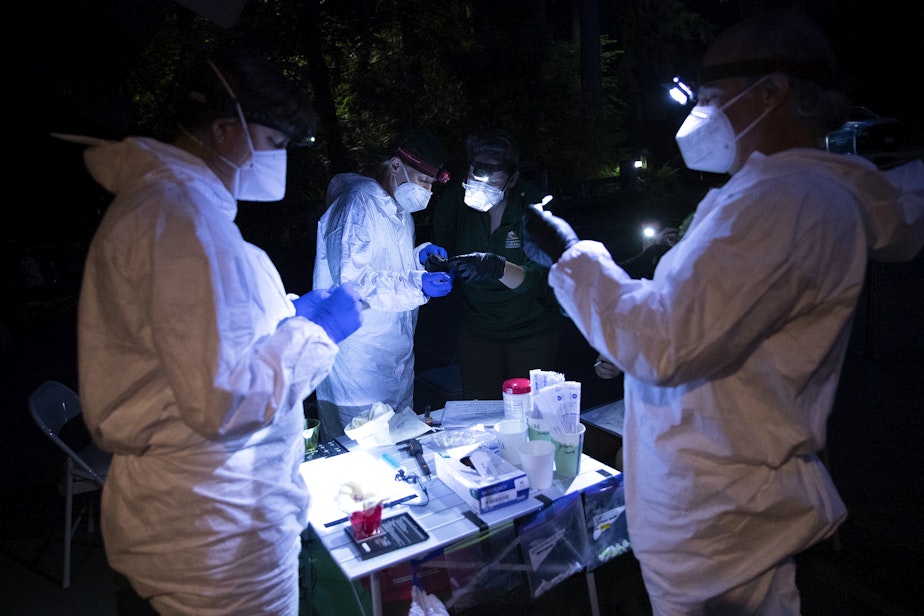Deadly white-nose disease is spreading in Western Washington bats

A deadly disease in bats is spreading in Washington state.
Wildlife officials say the fungal disease known as white-nose syndrome has spread to seven more counties in Western Washington and four in Eastern Washington.
The fungus that causes white-nose syndrome was found for the first time in Clallam, Clark, Grant, Grays Harbor, Island, Kitsap, Klickitat, Okanogan, and Whatcom counties for the first time in 2024, Washington Department of Fish and Wildlife bat researcher Abby Tobin said in a press release. Diseased bats were also found in Benton and Thurston counties.
The fungal disease has killed millions of bats across the country since it was first detected in a cave in upstate New York in 2006; according to the U.S. Fish and Wildlife Service's White-Nose Syndrome Response Team, white-nose syndrome is one of the worst modern wildlife disease oubreaks.
RELATED: 'Yogurt for bats': A new way to fight a deadly pandemic
Washington is home to 15 species of bats, which provide major economic benefits by eating insects all night long.
Sponsored

A new study finds that the widespread loss of bats in the Eastern United States has, indirectly, harmed human health there.
With fewer bats around to consume insects, farmers wind up using more pesticides, which can contaminate nearby communities’ air and water, University of Chicago environmental economist Eyal Frank wrote in the journal Science. In Eastern United States counties where bat populations collapsed as white-nose syndrome spread, farmers increased their pesticide use by nearly a third, Frank found. He estimated the increased pesticide use led to more than 1,300 infant deaths in those counties from 2006 to 2017.
Counties where bats had not (yet) been decimated did not show increases in pesticide use or infant mortality rates.
Despite the increased pesticide use, crop output also fell. The fungal disease caused more than $39 billion in total economic damage, according to Frank.
Sponsored
RELATED: Puget Sound's biggest bat colony could be big loser of dam-removal project
The first case of white-nose syndrome in the Western United States appeared in Washington’s King County in 2016. To date, the fungus has spread to at least 21 of 39 counties in Washington. No cases have been detected in Oregon. In Idaho, researchers found the disease in six bats in a cave in Lake County, in the state’s far southeastern corner, in 2021.
The disease poses no direct threat to humans, but humans can spread the disease to bats by carrying fungal spores on their clothing or shoes.




